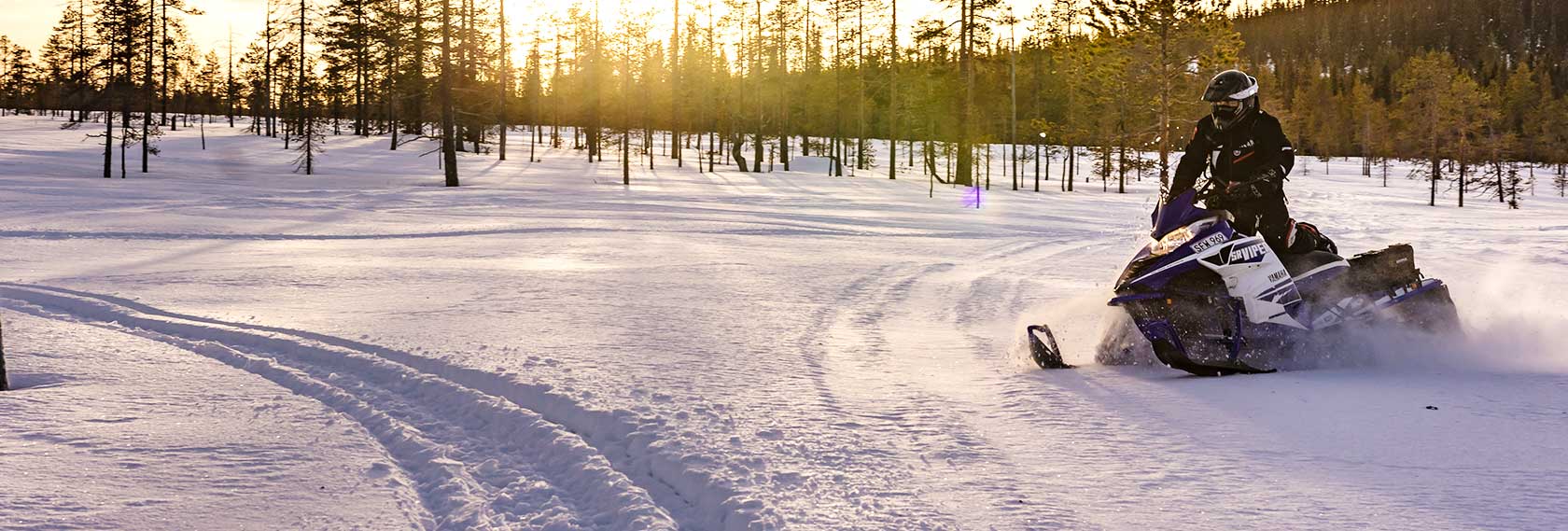

Your humble reporter is at it again, bringing you another installment of the great American Ski Test. For this article we tested the C&A RZ Razors Pro Ski, billed on their website as a “high performance snowmobile ski with aggressive control for experienced riders and racers.”
Last season I gave the original Simmons Flexi-Ski and SLP skis high marks for all areas of performance, with the edge going to the Simmons for more precise cornering and better bump absorption. The SLP’s were smooth riding and by far the best at avoiding darting. Both skis tested well on my 2010 Arctic Cat Z1 and 2005 Firecat F7 and were a huge upgrade over stock. Whether you ride a Z1, REV, RUSH, or Nytro you can be sure these new boards will deliver as advertised.
I want to step back for a minute and say that before I got into this testing I warned the manufacturers that I would pull no punches here, just straight-up, head-to-head testing. Those that agreed to the test stated that their ski was truly the king, the one and only, the Holy Grail of skis. We shall see. We’re looking for a winner here with performance in mind and yours truly proudly at the controls.
Most of the objections I’ve heard about purchasing aftermarket skis have to do with the high cost of these plastic boards and how much of an improvement over stock they actually deliver. Riders were skeptical as to how much performance was to be gained versus dollar spent. At $400 to $600, I can sympathize. That’s a lot of dough. As far as performance goes, I will peel back the layers of secrecy, remove the hype, and bring to light just what these plastic wonders can do for your ride. The cost issue will be addressed as well. No punches pulled here, just straight up trail-tested shootouts.
Upon arrival by UPS I discovered the RZ Razors to be of top quality, with much attention to the manufacturing process. There were no sharp edges, gouges, nicks or lines in the plastic. They were straight as an arrow and seemed substantial but I thought they weighed more than the 7 pounds stated on the website. A quick check using a precision calibrated digital scale revealed they were 6.4 pounds, on the button.
The loops were attached already and were of a racy design, patterned after their ever-popular C&A Pros. Installation of the saddles was easy and, as usual, mounting the skis to the sled became a trial and error operation. I found it best to place 2×4’s under the backside of the ski and let the jack down to align the saddle bolt holes. I installed the carbides and made the pilgrimage to northern New Hampshire one cold weekend in February.
I was told by my contact at C&A that front ski pressure has a lot to do with how well this ski performs. He suggested trying different pressures, lighter to start as a baseline. Entering the first turn I immediately noticed the heavy steering effort and drifted into the opposing lane. Okay, regroup and use the racer’s style with a taut push on one side of the bars and a resultant tug on the other. Once I did this the skis railed around the corners and all was well with the world again. The ski handled very well, following my lead, and gave no surprises to speak of.
Stiffer ski spring adjustments resulted in harder steering effort, settling the debate about where this ski resides in the food chain. Performance riders need only apply. No lightweights allowed. This ski is not your average sightseeing and putt-putt variety, it begs to be ridden hard and as such demands your attention. The corner-carving prowess is satisfying. Changes made to the bars in the apex of the corners have to utilize the push-pull method mentioned above. Make no mistake, this is a purebred performance/race ski, just as advertised.
The one trait I had issue with was darting, which was quite noticeable when set to the stiffest ski pressure. Although it diminished at the softest setting it could never be completely removed. Slushy snow seemed to be it’s toughest challenge and conversely softer, less grippy, powder snow was a delight. Part of its performance heritage I’m sure. The tip was quite stout and the whole ski looks like it could take some punishment; overall a very robust and well-made design.
As far as cost goes, one has to look at the big picture. Buying a set of aftermarket skis is a costly venture, but know this: You can take the stock skis off, put the aftermarkets on, enjoy better performance, and when you sell the sled take the aftermarkets with you. How great is that?
So, just how does the C&A Razor stack up against the present reigning king, the Simmons Flexi Ski? High marks are given to the Razors for durability, looks and performance feel. Darting was the Achilles’ heel but some performance riders will not care about this trait because of the corner precision these skis deliver. In light of that fact, the Simmons still reign supreme. It’s cornering precision, minimal darting, shock absorption and light turning effort all add up to the total package that long distance and performance trail riders desire.
All in all, any of these are a colossal upgrade over any stock ski out there. While I haven’t tested the skis on other brands of snowmobiles I can attest to their strength and weaknesses on my Cats. But the test is not finished yet, there are still more skis to go. I pray that other companies will participate before I run out of money! Stay tuned for part three!
The Great American Ski Test, Part I: SLP Straight Line Tracking versus Simmons Flexi Ski:
The Great American Ski Test, Part II: C&A RZ Razors